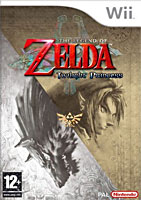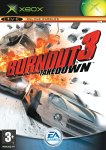 I wouldn’t say that we’re obsessed with gaming in our household, but we did somehow manage to acquire four new games consoles in 2006. Okay, so two of them were handhelds, but still:
I wouldn’t say that we’re obsessed with gaming in our household, but we did somehow manage to acquire four new games consoles in 2006. Okay, so two of them were handhelds, but still:
- a GameBoy Advance for Fiona
- a shiny new DS Lite for me
- an XBox 360 for the family (honest)
- a Wii
The tipping point for the XBox 360 came in September, when Lego Star Wars Lego II came out. We had bought a new “HD ready” LCD TV (720p only, not 1080) over the summer, but we didn’t have any HD sources for it yet. We had to get Lego Star Wars II, of course, and the 360 version was in HD, and so was reported to be the best-looking of all the multi-platform versions. So it was just common sense to buy a 360 to play it on.
Game of the year, though, is without a doubt Zelda: Twilight Princess. I got a Wii at launch, and Zelda kept the whole family occupied over the entire Christmas and New Year period. We finally finished it early in January after clocking up about 200 hours of play time on our various save games.
Other games that were fun during the year were New Super Mario Bros on the DS, and Geometry Wars on the 360. I finally finished Halo 2 as well, which was tedious and had an annoying cliffhanger ending. But nothing else even came close to Lego Star Wars or Zelda.
I’m going to be facing an interesting choice over the next week or so, as various shops in the UK start taking pre-orders for the PlayStation 3. There’s no way I’m going to camp out in front of a real-world shop to get one, nor do I have any intention of buying one on eBay for more than the standard retail price. But if I could get my hands on a pre-ordered one from an online retailer? Hmm.
Arguments in favour:
- It would replace our (old, noisy) PS2 with a quieter console with wireless controllers. (Apart from the N64, the PS2 is the last bastion of tangle-friendly wired controllers.)
- It would give us a high-def video player without having to buy an HD-DVD add-on for the 360. And seeing as we’ve got one of the loud 360s (even without a disc in it, it sounds like a Tornado on take-off), I don’t think I want to use it as a player, anyway.
- We could afford it right now, whereas money is likely to be tighter after the summer and the move to NL.
- High resale value of it doesn’t work, or if I fancy a sudden infusion of cash.
Arguments against:
- There isn’t a single PS3 exclusive either at launch or on the horizon that I want to play.
- By the time there are PS3 titles I want to play, the console will be cheaper.
Hmm. Brain says no. Gadget Fever says OOH OOH SHINY WANT.
Gadget Fever needs a slap.
(And this is finally the last of the “best of 2006” entries. I’ll move on to talking about some of the interesting things we’ll be doing in 2007 soon.)

 The biggest online worlds may seem well-developed compared to their predecessors, but they are in still in their infancy with regard to user interaction and freedom of action. Despite being larger than any
The biggest online worlds may seem well-developed compared to their predecessors, but they are in still in their infancy with regard to user interaction and freedom of action. Despite being larger than any  Of the “completable” games I bought, I ended up finishing only two of them:
Of the “completable” games I bought, I ended up finishing only two of them: